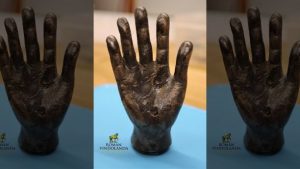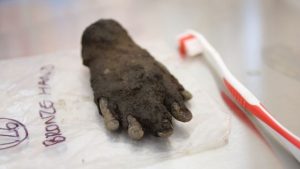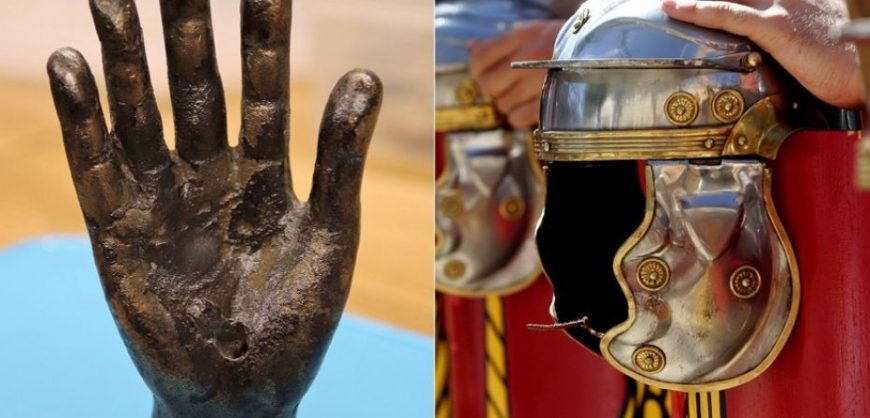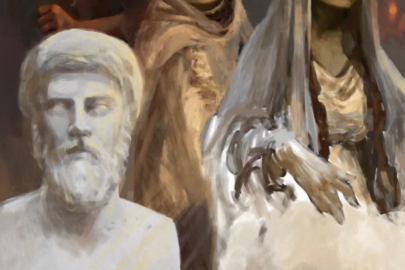A mysterious bronze hand has been unearthed by archaeologists near Hadrian’s Wall in the North of England.
The child-sized hand was discovered in April during an excavation at the site of Vindolanda, an ancient Roman fort.
Discarded in a ditch, the hand was found near a temple devoted to the god Jupiter Dolichenus. The temple is part of the 3rd century A.D. fort’s northern wall and dates back to a turbulent time in Roman history. Research has dated the hand to between 208 and 212 A.D., coinciding with the time of so-called “Severan” emperors in Rome, a period marked by conflict, civil war, genocide and rebellion.
The cult of Jupiter Dolichenus is shrouded in mystery. “The cult is one of the ‘mysterious’ eastern cults due to it dying out before the adoption of Christianity in the main body of the Empire,” Dr. Andrew Birley, CEO and director of excavations at the Vindolanda Trust, told Fox News, via email. “What we do know is that the cult is associated with the weather (certainly something the Romans would have encountered a lot of in Northern Britain in their war) and metal working.”

The 4-inch hand originally had an attachment, now missing, that was inserted into the palm. Jupiter Dolichenus was typically depicted holding a thunderbolt in his hand with upraised arm signifying his destructive power, according to experts. The open hand also symbolizes protection and well-being.
The hand’s base has a socket and would have been originally fixed to a pole.
“This period was at the end of one of the bloodiest conflicts that has ever taken place on British soil,” Birley told Fox News. “It is a small window into the Roman psyche of those who had come through that war, representing the relief of survival and the hope of continued success and giving thanks to the god.”

At the time of the artifact’s dedication, Jupiter Dolichenus was at the height of his popularity, according to Birley, stretching from Vindolanda in northern Britain to Rome, to Crimea and Syria. Other votive hands have been found in other parts of the Roman Empire, but are slightly larger than the artifact found at Vindolanda.
The hand is the latest fascinating find at the historic site. Earliest this year, for example, archaeologists unearthed ancient boxing gloves at Vindolanda.
Last year, a trove of artifacts, including Roman swords, was discovered at Vindolanda. Researchers also found 25 wooden ink documents at the former fort, offering a fascinating glimpse into everyday life in the Roman Empire.
Source: foxnews

































